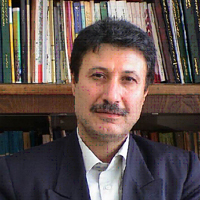The Contribution of Water to the Morphology of the Historic Qazvin City (Qajar Era)
Even though the dearth of water has long been a permanent challenge in Iran, a large majority of Iranian cities have managed to survive by harvesting underground water through the Qanat system. All these cities share some special features in terms of urban morphology and their traditional water infrastructures have influenced their urban texture to a large extent. Of these cities, the historic city of Qazvin has been selected as a case study.
Research
This study attempts to examine the contribution of water to urban morphological elements. Since water as a natural element of the urban context determines urban forms (street, plot and building systems), this study seeks to identify such effects on these systems.
Research
The historic city of Qazvin was selected as the research site. Data related to the elements of the urban form of this city in the Qajar era were collected through field observation and interviews with old citizens of Qazvin and experts. Also, relevant documents were examined and analyzed. For data analysis, related software programs were used.
Examining the presence of water in four elements of urban forms shows that water as an independent factor has had a large effect on urban morphology. It mainly affects street systems but this effect for building systems was much lesser. However, this effect on the plot systems has been very slight. Overlooking this effect while carrying out intervention in the historic urban texture might lead to some misunderstanding and result in an incorrect decision in the historic urban texture.
-
Examining the Compatibility of Green Infrastructure with Urban Land Use, Case Study: Abbasabad Lands of Tehran
Sara Allah Gholipour, *
Journal of Urban Ecology Researches, -
Explaining the impacts of the rational development of the city on the realization of a slow city (a case study of Qazvin city)
Fatemeh Asadollah Sharifi, Seyyed Mohammad Reza Khatibi *, Jamaleddin Soheili
Journal of Life Space, -
Investigating the spatial-spatial organizing strategies of informal settlements(Case study: Murad Ab Karaj hill)
Seyed Ali Sharifi, Keramatolah Zeyari *, Mohammdreza Khatibi
Journal of safe city, -
A Comparative Study of Population Growth Indicators in Iranian Cities and Their Geographical Neighbors
Keramatolah Ziari *, Samin Yousefi
Journal of Urban Economics, -
Urban morphology knowledge and its usage in studying the urban fabric(the case study: Historical Qazvin city)
Nasim Iranmananesh, MohammadReza Pour Jafar *, Karamatollah Ziari, MohammadReza Khatibi
Amayesh Journal, -
حسات مدنی و فضاهای شهری
مهندس نسیم ایرانمنش
فصلنامه مسکن و محیط روستا، تابستان 1382





